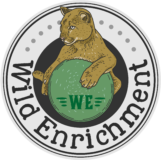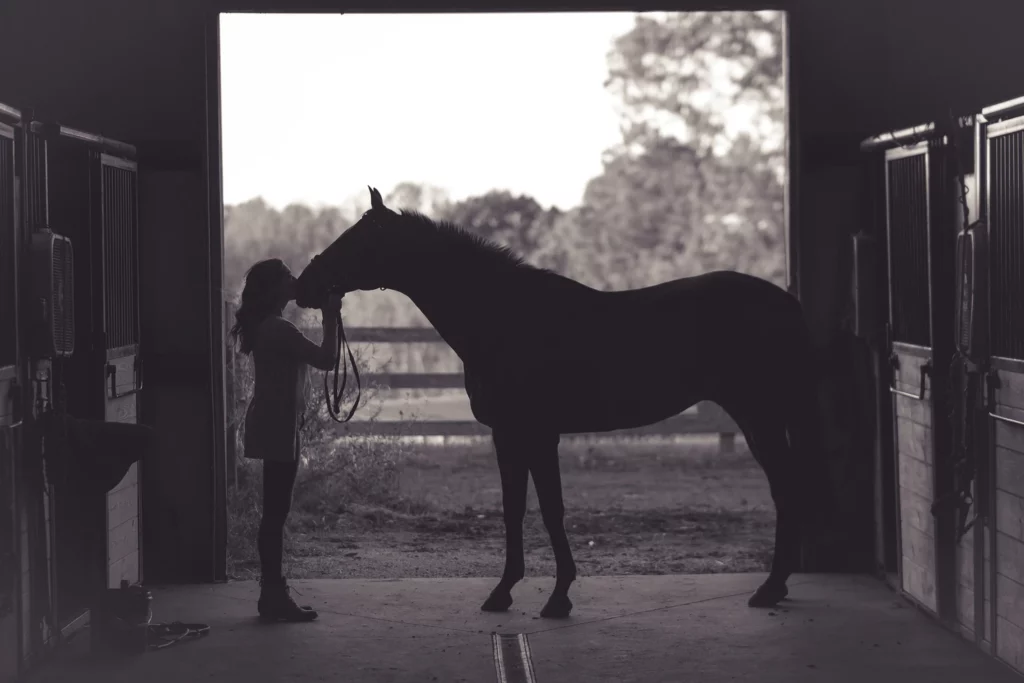Domestic Animals Need Enrichment Too
I was lucky enough to grow up on a horse farm and be around horses and the equine industry for most of my life. When I was a bit older I started my career in the zoo and exotics world and one of the things that struck me the most was this concept of behavioural husbandry and enrichment. Before I started in exotics, these aren’t words that I had heard before, I had always been around horses that had been extremely well cared for by their owners, but had never seen anyone or heard of anyone designing an enrichment program for their horse. This fact seemed odd to me as most zoos around the world take an immense amount of time and energy to design behavioural husbandry programs for the animals in their care including equids.
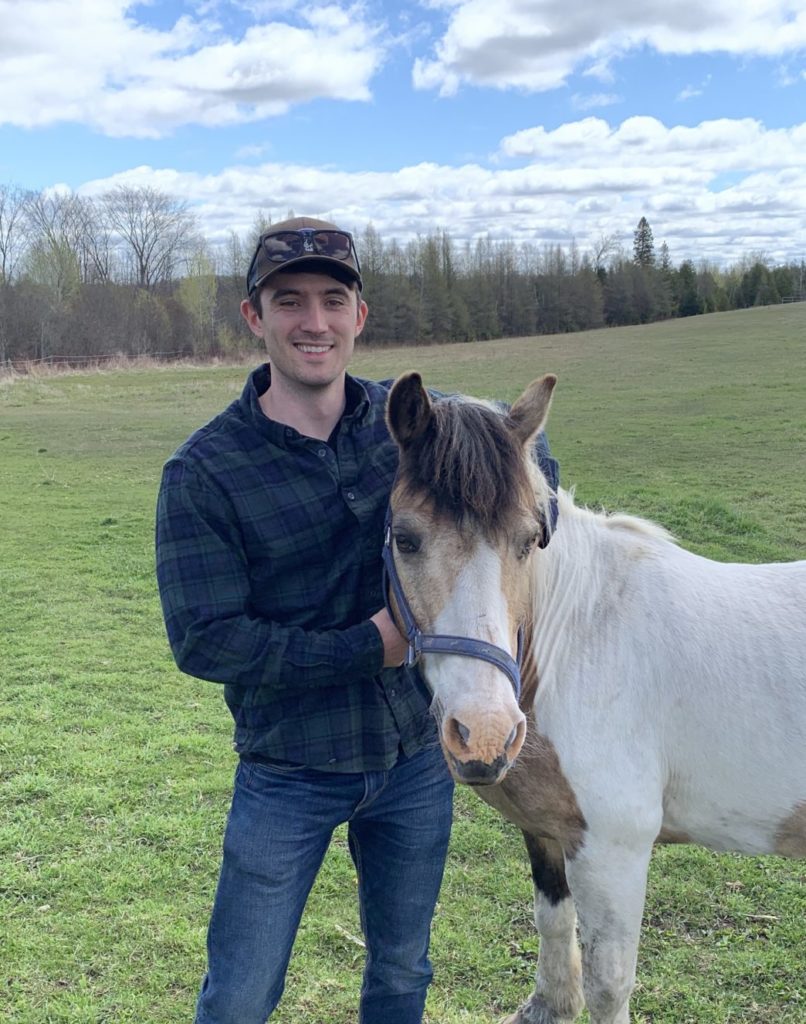
I chalked this discrepancy up to having been out of the “horse world” for quite some time, so I went online and checked some local job boards for barn manager and barn hand positions. I looked through dozens of jobs, from race tracks, hobby farms and equestrian centres, I was unable to find any that mentioned behavioural husbandry or enrichment, most of the job postings looked like the one shown above. I have seen and spoken to many barns that do make efforts to enrich and train their horses outside of being ridden, but this seems to be the exception and not the rule in the industry. I’ve spent a lot of time creating enrichment plans and behavioural husbandry programs for a variety of exotic animals, and many of the key concepts and ideas transfer over to the domestic animal world. So let’s take a deep dive into what a behavioural husbandry program for a horse might look like and how it will not only benefit your beloved horse, but also allow you to have fun doing it!
What is Behavioural Husbandry?
Now if you’re new to the world of behavioural husbandry in general, that’s okay! I have lots of in-depth resources on my website that can help you get up to speed on what enrichment is, why it’s beneficial to animals, and how to create an enrichment program.
Essentially enrichment is an object or a concept that stimulates an animal mentally or physically, generally by getting the animal to exhibit a natural behaviour. A behavioural husbandry program is a program designed to take care of the mental state and overall welfare of an animal through the use of both environmental enrichment and training. There are infinite ways to enrich an animal, but these techniques and items usually fall into one of several categories; Sensory, Environmental, Forage/Feeding, Occupational and Social. In this article we will go in depth into all of these categories and explain how they can be used to enrich the lives of your horse.
Stable Vices= Stereotypic Behaviours
One of the major reasons we provide animals with enrichment is to prevent stereotypies, which are essentially unnatural, negative behaviours that serve no purpose that animals are thought to develop as a coping mechanism to an inadequate environment. In the horse world, these are often called “Stable vices” and take many forms, including cribbing, head bobbing and weaving. In the wild, horses are faced with an ever adapting and complex environment, filled with positive and negative stressors, from mate acquisition and defence to predator evasion. Often the environments we are keeping our horses in are much more stagnant and not nearly as complex, so they develop these negative behaviours as a method to cope with an environment they have not evolved to handle. A lot of the time, these stable vices are viewed as normal and not preventable, but we are going to show you how to not only prevent these negative behaviours from developing, but also help you potentially help an animal that has already developed these behaviours.
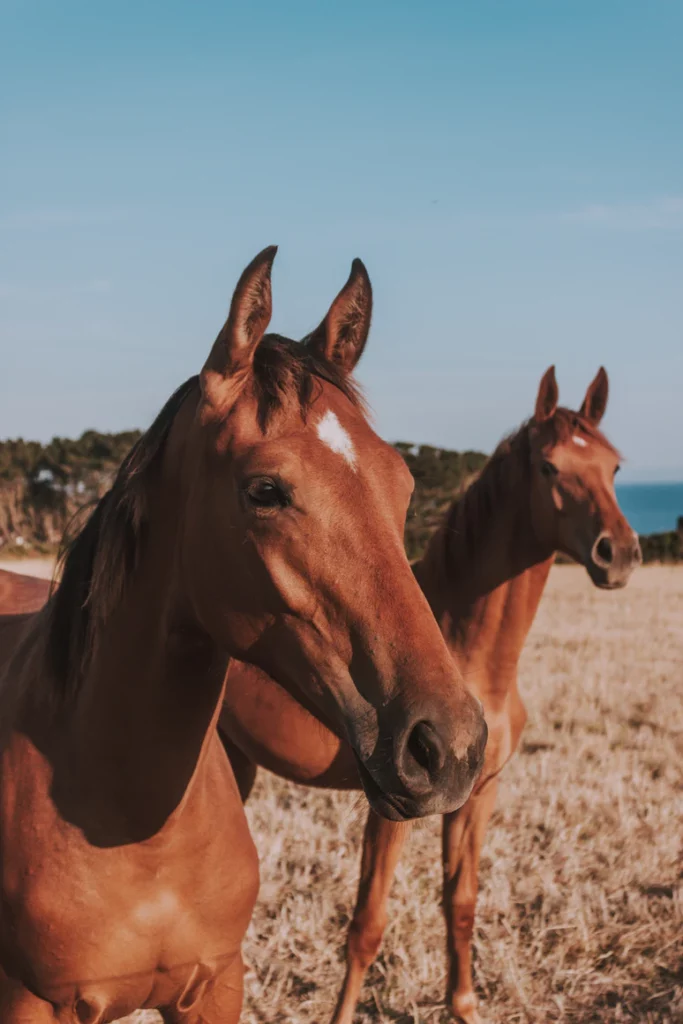
Social Enrichment
The first and probably most important type of enrichment we are going to talk about today is the need for adequate social interaction for horses. Horses are highly social herd animals that are capable of complex social hierarchies and dynamics. A healthy horse in the wild would never make a choice to live by itself, which means that your horse almost certainly doesn’t want to live by itself either. One of the main reasons horses don’t like to be alone is because they evolved as prey animals, and the main defence mechanism they have against predators, besides running away, is their herd mates looking out for them, strength in numbers. To form and strengthen these complex herd dynamics, horses have evolved to perform behaviours such as mutual grooming, play behaviours, and preferences for specific individuals within their herd. Therefore, in order for a horse to perform and develop these evolved behaviours and relationship structures, horses need to be kept with other horses or at the very least, with other animals, although this is much less effective.
Training Doesn’t Just Have to be About Riding
The great thing about horses is that they are domesticated animals that have been around humans for thousands of years, and have developed the ability to form strong and lasting bonds with their owners and caretakers, which gives you the unique ability to be a part of your horses enrichment program! One of the main ways in which you can take part in this behavioural husbandry program is by developing this relationship with your horse through relationship building exercises and positive reinforcement training. Now, I will do a full article one day about horse training with positive reinforcement, but let’s focus on a brief introduction to training for welfare purposes. When most people think about horse training, they often think mainly about training horses to be ridden, but if we are looking from a welfare standpoint, training horses should be about so much more than riding them. Although the research isn’t conclusive, it’s probably safe to say that based on the current research, your horse probably doesn’t like being ridden very much, and instead tolerates it. Now there are definitely horses out there that like being ridden, but, making riding the main form of training enrichment a horse is receiving is probably not optimal for their welfare.
I’m not saying that you should stop riding your horse, but instead of riding it every day, ride it less and think about other ways of training and interacting with your horse. One of the first things you should consider when thinking of behaviours to teach your horse, is areas in their life that cause them stress, and how training could mitigate that. For example, train your horse to open its mouth on command:
Teach it you get on a trailer willingly:
Try teaching it to target:
Once you have some basic husbandry behaviours trained, I’d suggest branching out to more “fun” behaviours, that are mainly focused on building your relationship with your horse while at the same time, challenging them mentally.
Train them to fetch:
Just train them to play interactive games with you!
I know some people reading this might think some of these things aren’t doable with their horse, but I promise you, you can accomplish a lot if you just put the time and effort into it, and bonding/ spending time with your horse is the whole point!
Food Based Enrichment
The next category I would like to touch on is that of feeding enrichment for your horse. As a grazer, your horse has evolved to spend a vast amount of time during the day eating low calorie high fibre food such as grass. The main takeaway from this is that your horse has a physical and mental desire to be eating and digesting food items for most of the day. This is relatively easy to solve when your horse has access to pastures for the whole day, but can become a problem if the grass dies off too quickly, during winter months, or for horses that require grain. The main point I want to express with food enrichment for horses is that feeding events should be spread out to be as long as possible and regardless of circumstance your horse should be spending much of the day eating or acquiring food. There’s a few ways you can do this, generally having a few different grain feeders and hay feeders available to put the food items inside of, is going to be very effective. There are many different “puzzle feeders” for horses on the market, and you can also make your own out of water bottles and barrels, as we will touch on shortly.
Another way to provide food based enrichment to a horse is through novelty. The two main ways to do this are through novel food items or novel food presentations. One of the easiest ways to provide enrichment to your horse is to give it a food item that it hasn’t had before or one that it doesn’t get often. Most horses only get the occasional apple or carrot and a molasses treat, but are able to eat a wide variety of fruits and vegetables. However you should always do your research before giving your horse a new food item, and start with very small amounts. Depending on how well versed your horse’s palate is, it might take a while for them to actually decide to sample one of these new food items, so don’t give up right away if your horse scoffs at your novel food item the first time it’s offered. We touched on this earlier when we talked about different types of feeders you can buy for your horse and if your horse is being fed any part of its diet out of a bucket or bowl, throw the bucket out and get creative! Instead of placing your horse’s grain in a bucket, drill holes in a gallon water jug, fill it with the grain and hang it from the ceiling of your horse’s stall. Instead of just giving your horse an apple, cut it up and freeze it in water to make an apple popsicle. There’s a million ways of creatively feeding your horse to enhance its feeding experiences, get creative and don’t be afraid to challenge your horse!
Scent Based Enrichment
Another great way to enrich your horse is through scent enrichment. Horses have a great sense of smell that allows them to detect predators and other horses from large distances away, and this can be used to your advantage by providing your horse with novel and new scents in its environment. In the zoo world we will often place spices, herbs, perfumes and even feces from other animals inside the exhibit of an animal in order for them to experience different scents. As with the novel food you present your horse, always do your research before putting a new herb, spice or perfume in your horse’s environment. With scents especially, less is more! You don’t want to overload your horse’s environment with the scent of cinnamon, you want them to be able to walk over to a small part of their paddock and smell the cinnamon you sprinkled on the ground. Again, get creative with this one and see what your horse reacts to!
The Welfare Mindset
If you are like me, you already have 1000+ ideas of things you want to try out with your horse at this stage in the article. I think a lot of a horse enrichment program is going to come to you by making the mindset shift from a horse being a pet that you ride, to thinking of them as a highly social, intelligent and complex animal, who has a tonne of natural behaviours that you get to try and bring out of them. Keep this in the back of your mind when you are doing anything for your horse. How can you make this riding session more enriching for your horse? How can you make this training session more enriching for your horse? Your goal shouldn’t just be to have a well trained horse, but also one that is mentally and physically engaged and enriched.
Have you ever just taken your horse for a long walk? Not riding it, just leading it and letting it smell a bush and eat some grass? Trail rides can be incredibly enriching for a horse, but maybe load them into a trailer and go for a walk with them every once in a while.
Tracking and Long Term Success
One of the most important aspects of any successful enrichment program is to track and set goals for your horse over the long term. In the zoo world, we track every enrichment item we give an animal every single day and rate its effectiveness on bringing out the desired reaction/ behaviour. This is super effective in a zoo setting, but I recognize that this might not be possible or be overkill for most horse barns out there. So what I recommend doing is creating cards for each horse that you are trying to enrich with goals, health problems, notes and a basic enrichment calendar where you outline what enrichment your horse gets on what day of the week. For example:
Here’s the link to this form if you want to try it out.
The purpose of this form is really to try and get everyone on the same page with the behavioural husbandry challenges and goals you might have for your horse. By having this sort of information posted outside a horses stall for instance, you and anyone caring for the horse immediately know the basics of the horses health and behavioural history and what enrichment they should be getting that day. If you own a barn, this system will help you keep your program organized for multiple animals and will allow you to spend less time thinking of what enrichment to give each horse.
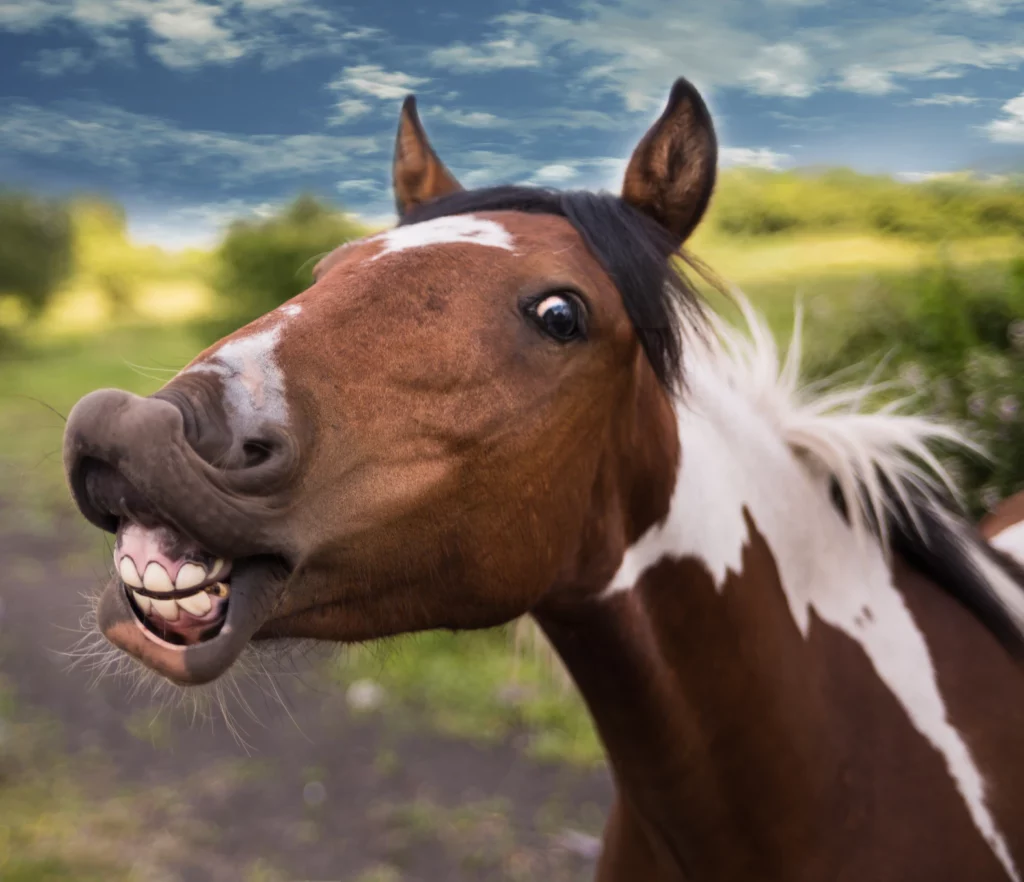
Conclusion
In conclusion, your horse is a very intelligent animal that is capable of complex thought and social relationships, that a lot of captive environments are unable to provide. Their environments need to be made more complex in order to cater to this intelligence and need for the adversity that their wild environments would provide. Owning a horse is about so much more than riding that horse, it’s about creating an environment where it can thrive both physically and mentally. Training complex behaviours, offering novel food items as well as making feeding events more interesting, scent enrichment and adequate social enrichment are all crucial parts of a successful horse behavioural husbandry program. Now get out there and make some horses happy!
